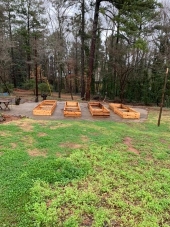
 1
1




J.Bib- new to gardening...but very excited about it!
 1
1




Jor Bib wrote:1)I can build my beds N-S, so that should be good, correct?
Jor Bib wrote:2) I only have a narrow space to plant between our arborvitae and our house. The space is 15' long and at the top 5'' wide but opens at the bottom to be 7'.
Jor Bib wrote:a) Is this space better suited for a simple small hugel or a big pile? I was thinking a bigger hugel might provide me with more area to plant?
Jor Bib wrote:b) How much space should I leave on each side of the beds so I can harvest?
Jor Bib wrote:3) what happens years down the road to a hugel? Will I ever dig it up and restart and have to deal with getting rid of excess soil?
'Theoretically this level of creeping Orwellian dynamics should ramp up our awareness, but what happens instead is that each alert becomes less and less effective because we're incredibly stupid.' - Jerry Holkins




J.Bib- new to gardening...but very excited about it!




Mediterranean climate, hugel trenches, fabulous clay soil high in nutrients, self-watering containers with hugel layers, keyhole composting with low hugel raised beds, thick Back to Eden Wood chips mulch (distinguished from Bark chips), using as many native plants as possible....all drought tolerant.




'Theoretically this level of creeping Orwellian dynamics should ramp up our awareness, but what happens instead is that each alert becomes less and less effective because we're incredibly stupid.' - Jerry Holkins




J.Bib- new to gardening...but very excited about it!

|
I love a woman who dresses in stainless steel ... and carries tiny ads:
Learn Permaculture through a little hard work
https://wheaton-labs.com/bootcamp
|





